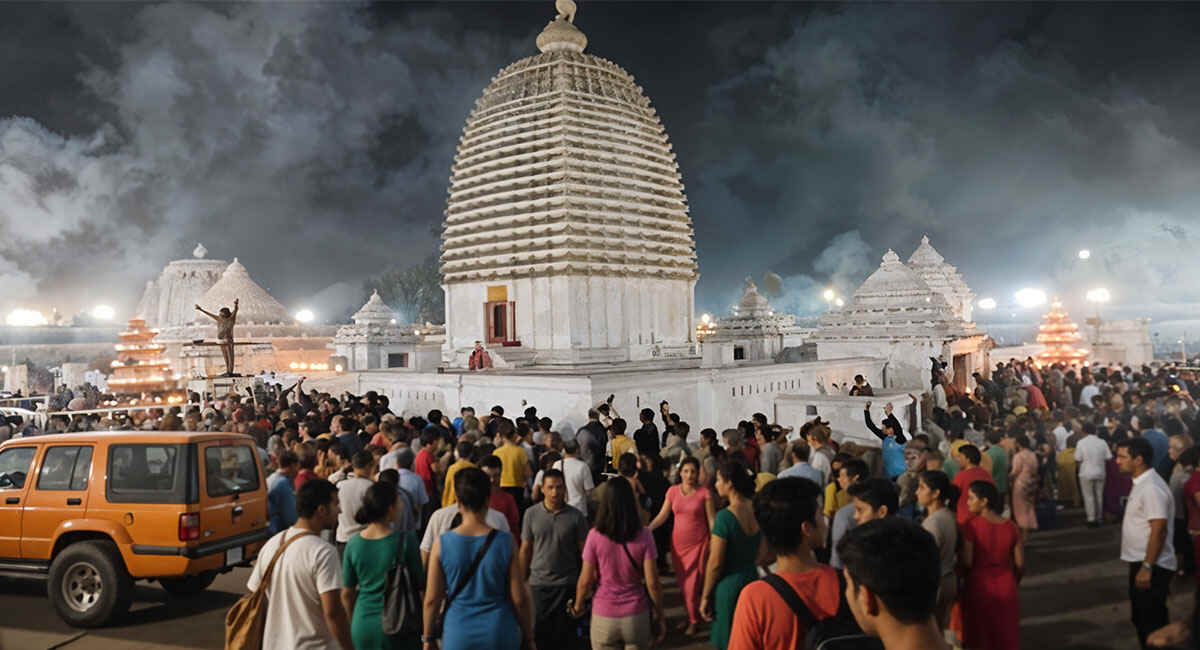Joranda Mela: A Spiritual Spectacle in the Heart of Odisha
India has colorful festivals, rich spiritual traditions, and diverse cultures. Among its many unique celebrations, Joranda Mela is a profoundly spiritual and lesser-known festival that beautifully reflects Odisha’s mystic charm. Held annually in the tranquil village of Joranda near Dhenkanal, this fair is a soulful convergence of faith, devotion, and ancient spiritual practices. Rooted in the teachings of the Mahima Dharma, Joranda Mela is not just a festival; it’s a journey into the heart of a unique religious philosophy that celebrates simplicity, asceticism, and universal brotherhood.
What is Joranda Mela?
The followers of Mahima Dharma, a unique sect, organize the religious congregation known as Joranda Mela, where they actively preach the worship of a formless and invisible supreme being called Alekh. This sect, founded by Mahima Gosain, originated in Odisha in the 19th century and emphasizes a life of renunciation, nonviolence, and strict vegetarianism. The mela attracts saints, monks (known as Mahima Sannyasis), and devotees from all across India on Magha Purnima, the full moon day in the Hindu month of Magha (January–February).
The Sacred Grounds of Joranda
Joranda, the spiritual headquarters of Mahima Dharma, is home to the Mahima Gadi, the main monastery of the sect. Forests and hills surround the location, adding a serene and meditative quality to the festival. The ashram complex houses three critical temples: Sunya Mandir, Dhuni Mandir, and Gadi Mandir. These temples don’t have idols but instead enshrine the concept of the formless divinity, aligning with Mahima Dharma’s core belief in Sunyavada (the philosophy of the void or the formless).
The Spiritual Essence of the Festival
The highlight of Joranda Mela is its evening prayer rituals, where monks clad in saffron robes chant hymns in unison, walk in processions, and perform fire rituals (dhuni puja) in front of the temples. As dusk falls, the air fills with the sounds of “Alekh Brahma ki Jai”—praises to the formless god—and the fragrance of burning camphor and incense. It’s a captivating sight for devout spiritual seekers and curious travelers.
The fire rituals are particularly significant, symbolizing the burning away of material desires and ego. The monks circumambulate the sacred fire while offering prayers for peace and spiritual enlightenment.
Rituals and Traditions
The rituals at Joranda Mela are unique and devoid of the complex paraphernalia often associated with mainstream Hindu worship. There are no idols, elaborate offerings, or caste-based restrictions. Instead, the focus is on spiritual purity, meditation, and community worship. Followers of Mahima Dharma live austere lives, and during the mela, they spread their guru’s teachings, encourage simple living, and practice self-restraint.
Some key practices during the mela include:
- Dhuni Puja: Worship of the sacred fire, symbolizing the eternal truth.
- Bhajan and Kirtan: Spiritual songs and hymns glorifying the formless Alekh.
- Community Feasting (Langar): Free vegetarian food is distributed to all visitors, reinforcing the message of equality and service.
- Discourses and Debates: Saints deliver sermons and discuss spiritual philosophy, nonviolence, and moral living.
A Gathering of Faith and Harmony
Joranda Mela is a confluence of thousands of devotees across Odisha, Chhattisgarh, Andhra Pradesh, West Bengal, and even Maharashtra. Pilgrims walk long distances to attend the fair, many dressed in simple white or saffron robes. It’s rare to see people of all backgrounds—irrespective of caste, creed, or social status—sitting together in the sacred fire’s warmth, chanting prayers and sharing meals.
Interestingly, the festival attracts not just the religiously inclined but also researchers, anthropologists, and photographers who seek its raw spiritual energy and unique cultural elements.
Mahima Dharma, A Path Less Traveled
To understand Joranda Mela, one must delve into the teachings of Mahima Dharma, a spiritual path distinct from orthodox Hinduism. Mahima Gosain, its founder, is believed to have attained enlightenment on Kapilas Hill near Dhenkanal and spent years in intense penance. He advocated the idea of a formless, invisible god—Alekh—who exists beyond rituals, idols, and temples.
The faith emphasizes:
- Universal Brotherhood
- Non-violence and Compassion
- Equality of All Beings
- Renunciation of Material Desires
- Service to Humanity
Mahima Sannyasis lead monastic lives, renouncing family ties and worldly pleasures, dedicating themselves entirely to spiritual pursuits.
Local Flavor and Cultural Experience
While the spiritual aspect dominates the mela, it’s also a chance to experience the local culture of Odisha’s tribal heartland. Folk music, traditional food stalls, and local handicrafts create a vibrant yet grounded atmosphere. Visitors can sample pakhala bhata (fermented rice), dalma (lentils with vegetables), and other regional delicacies served with warmth and hospitality.
Final Thoughts
Joranda Mela is not just a festival—it’s a profound spiritual experience that invites introspection, simplicity, and a deeper connection to the divine. For those tired of commercialized festivals and looking for something raw, honest, and soul-stirring, Joranda offers a rare glimpse into India’s deeply rooted spiritual traditions. It’s where the material world recedes, and the soul asserts its silence—a reminder that sometimes, we express the loudest truths in the quietest ways.


